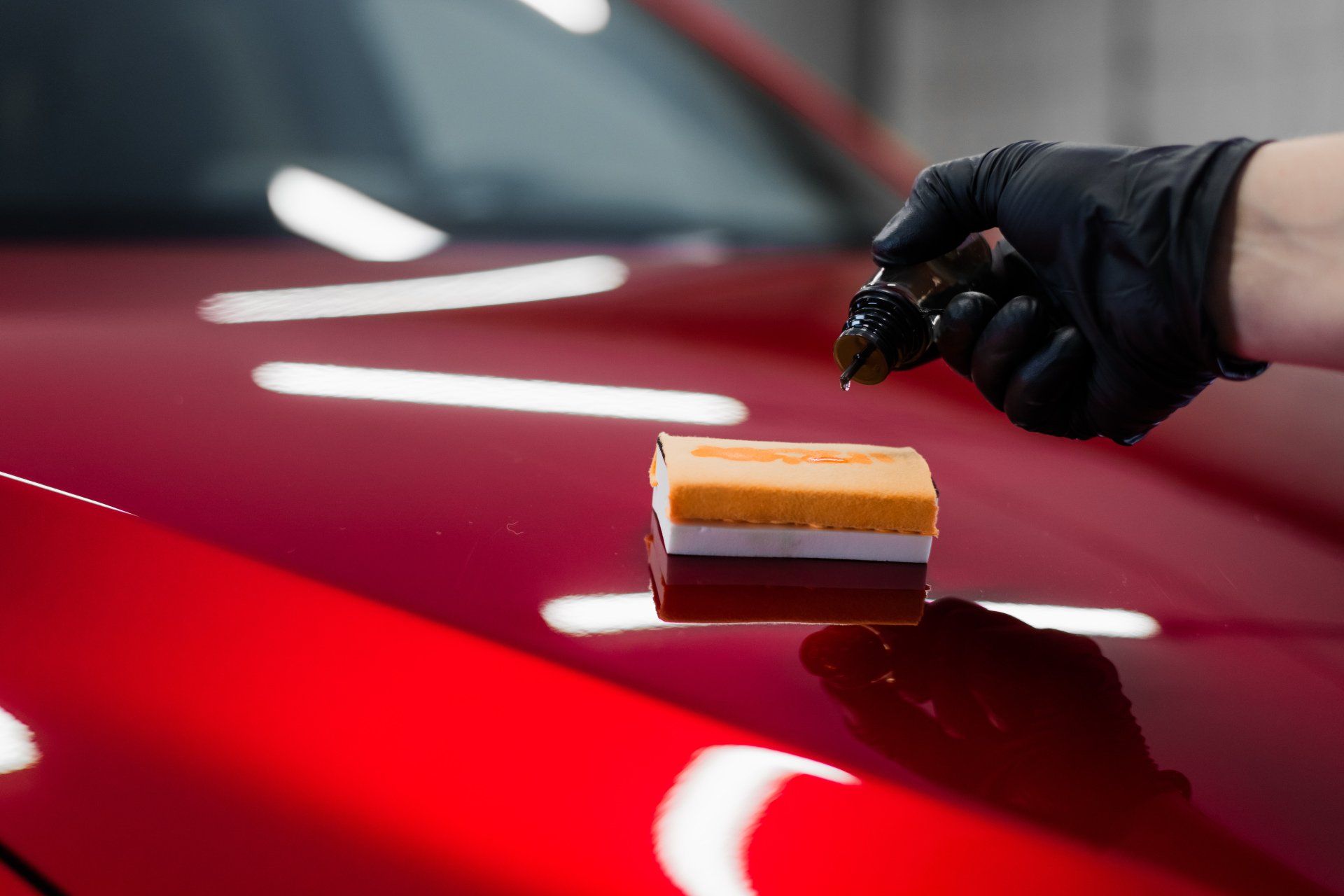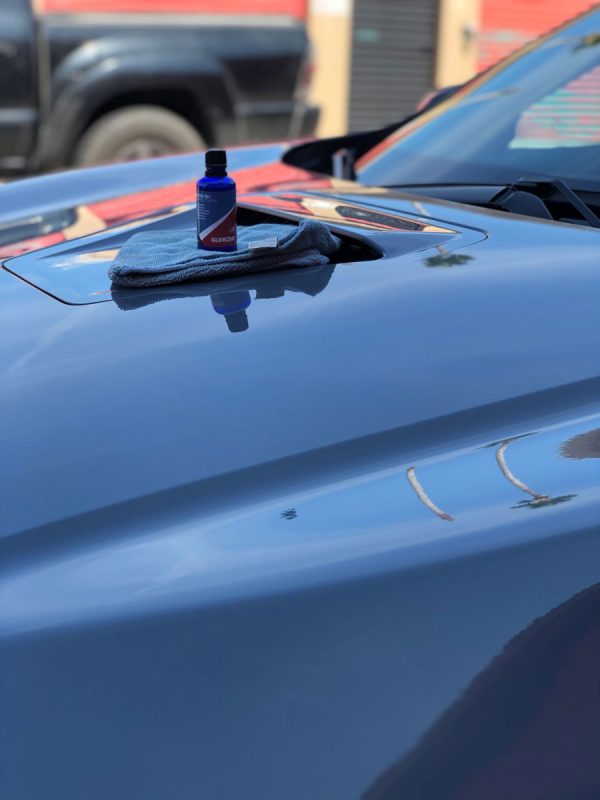Just How Ceramic Coating Can Secure Your Automobile from Environmental Damages
Just How Ceramic Coating Can Secure Your Automobile from Environmental Damages
Blog Article
The Significance of Ceramic Coating: Shielding Your Auto's Outside With Precision
In an era where keeping the aesthetic and functional integrity of your automobile is critical, ceramic covering arises as a critical remedy. This safety layer not only defend against ecological hardships yet also raises the visual charm of your automobile. With its special bonding buildings, ceramic covering offers a level of security that far exceeds typical waxing techniques. Yet, how precisely does it attain such impressive outcomes? As we explore the nuances of its application and contrast it to various other options, one can not aid but question concerning the specifics that make this innovation essential for contemporary car care.
Benefits of Ceramic Coating
When it comes to preserving a vehicle's aesthetic allure, ceramic finishing offers significant benefits. By developing a semi-permanent bond with the car's paint, ceramic finishings efficiently avoid oxidation and fading, ensuring that the car keeps a shiny, showroom-like finish for an extensive duration.
In addition to its protective top qualities, ceramic finishing provides remarkable hydrophobic residential or commercial properties, causing water and various other liquids to grain off effortlessly. This attribute streamlines the cleaning procedure, as dust and particles are less most likely to adhere to the surface, minimizing the frequency and initiative required for upkeep. The layer's resistance to chemical spots from acidic contaminants like bird droppings and tree sap is one more significant benefit, lessening potential paint damages.
Ceramic coatings likewise boost scratch resistance, supplying a layer that can absorb minor abrasions and swirl marks. This feature is particularly valuable in maintaining an excellent surface, decreasing the chance of visible flaws and maintaining the integrity of the automobile's paintwork with time.

Exactly How Ceramic Layer Works
Understanding the auto mechanics behind ceramic finish discloses its efficacy as a protective remedy for cars. Ceramic layers are basically fluid polymer applications that chemically bond with a vehicle's factory paint, producing a protective layer. This layer acts as a barrier against environmental impurities such as crud, dust, and ultraviolet rays, which can deteriorate a cars and truck's outside gradually. The crucial element in ceramic finish is silicon dioxide (SiO2), which stems from quartz crystals and is understood for its extraordinary firmness and toughness.
Application of ceramic finishing involves a meticulous procedure. The car's surface have to be completely cleaned and sanitized to guarantee optimal adhesion. Once applied, the fluid polymer develops a semi-permanent bond with the paint, setting into a clear, sturdy shield. This guard enhances the auto's gloss and hydrophobic properties, helping with much easier cleaning by creating water and pollutants to grain and slide off effortlessly.
Additionally, the covering's molecular framework gives resistance to minor scrapes and chemical discolorations. Unlike waxes or sealants that sit on top of the paint, ceramic layers integrate with the surface, supplying long-lasting security. This assimilation is basic to its effectiveness, making sure the lorry's finish stays excellent for several years.
Comparing Ceramic Coating to Alternatives
In the realm of automobile security, ceramic finishing stands as a powerful choice when contrasted to standard options such as waxes and sealers. While waxes use a short-lived glossy surface, normally lasting just a couple of weeks to months, ceramic finishes supply a longer-lasting option, commonly sustaining for many years. This longevity is connected to the chemical bonding that happens when ceramic finishes are applied, forming a solid layer that is immune to ecological risks.
Contrastingly, sealants, although even more resistant than waxes, still disappoint the durable defense used by ceramic finishings. Sealants can generally last for approximately a year, supplying a synthetic guard versus certain elements. Nonetheless, they lack the exceptional hydrophobic homes and UV security that ceramic coatings supply.
Additionally, ceramic finishings offer improved scratch resistance, which neither waxes neither sealants can successfully match (ceramic coating). This is especially beneficial in keeping a cars and truck's beautiful look. Furthermore, ceramic layers simplify upkeep efforts by lowering the adherence of dirt and gunk, thereby assisting in simpler cleansing. In summary, while standard waxes and sealers use basic defense, ceramic finishings present a detailed, lasting service that dramatically enhances and protects the car's outside finish.
Application Process Discussed
Applying ceramic covering to an automobile needs a thorough procedure to make certain optimum outcomes and longevity. The initial step includes completely cleaning up the auto's surface to eliminate dirt, grease, and previous waxes. This is vital for ensuring the finishing sticks appropriately. A pH-neutral hair shampoo and a clay bar therapy are often made use of to attain a pristine surface. As soon as cleansed, the automobile is dried and brightened to eliminate any kind of blemishes, as any kind of existing scratches or swirls can end up being more pronounced after the coating is used.
Following surface area preparation, the application of the ceramic layer begins. The coating is commonly applied in a climate-controlled setting to avoid dust bits from picking the newly cleaned surface area. Using an applicator pad, the ceramic finish is applied in little areas to guarantee also coverage. It is necessary to follow the maker's guidelines relating to the appropriate treating time and application density.
After application, the finishing requires a details curing period, during which the lorry should be safeguarded from water and pollutants. This healing process can vary depending upon the product however usually varies from 24 to 48 hours. Eventually, this in-depth procedure is crucial in achieving a durable and glossy coating.
Upkeep Tips for Longevity
To preserve the durability of a ceramic finishing, you could check here adherence to a regimented maintenance routine is essential. Stay clear of automated cars and truck cleans, as their extreme browse around these guys brushes can jeopardize the finishing's stability.
Post-wash, drying the vehicle with a tidy microfiber towel protects against water areas that may deteriorate the covering over time. In addition, use a ceramic finishing booster every few months. These boosters enhance the hydrophobic residential or commercial properties and enhance the layer's safety abilities, ensuring it stays efficient versus pollutants.
Keep in mind that car parking areas play a vital role in upkeep. ceramic coating. Whenever feasible, park in shaded areas to decrease UV exposure, which can gradually damage the finishing. For long-term storage, take into consideration making use of an automobile cover for included security against ecological elements
Verdict
To conclude, ceramic finish functions as an essential protective layer for automobile outsides, using long-lasting defense versus environmental aspects such as dust, uv, and grime rays. By creating a semi-permanent bond with the paint, it enhances aesthetic allure while preserving the cars and truck's worth. Its hydrophobic residential properties facilitate much easier upkeep, distinguishing it from alternate safety approaches. Understanding the application process and sticking to upkeep recommendations are crucial for making the most of the long life and performance of ceramic finishing.
When it comes to preserving an automobile's aesthetic appeal, ceramic coating offers substantial benefits. By developing a semi-permanent check it out bond with the car's paint, ceramic finishings efficiently avoid oxidation and fading, ensuring that the car keeps a shiny, showroom-like surface for an extended duration. Ceramic finishes are essentially liquid polymer applications that chemically bond with a car's manufacturing facility paint, producing a protective layer. In recap, while standard waxes and sealants supply fundamental protection, ceramic coatings offer an extensive, long-term option that substantially protects the vehicle and boosts's exterior coating.

Report this page